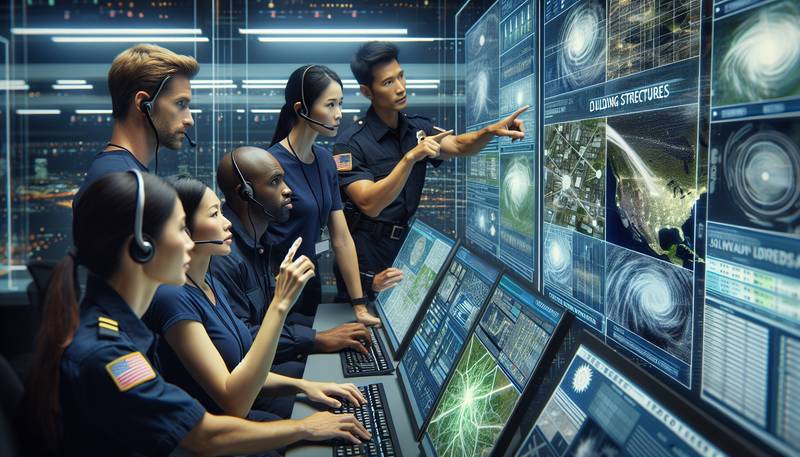Tech in Disaster Response: Innovation in Times of Need

Disasters, whether natural or man-made, have always been a part of human history. They can strike anywhere, anytime, and often without warning. When disaster strikes, the traditional response has been to rely on human ingenuity, bravery, and determination to overcome the challenges and rebuild. However, in recent years, technology has emerged as a critical tool in disaster response, providing innovative solutions to help save lives, minimize damage, and speed up recovery.
The Role of Technology in Disaster Response
The use of technology in disaster response is not new. For decades, emergency responders have relied on radios, telephones, and other communication tools to coordinate their efforts. However, the rapid advancements in technology over the past few decades have dramatically changed the way we respond to disasters. Today, technology plays a crucial role in every aspect of disaster response, from early warning systems to search and rescue operations, to rebuilding efforts.
Early Warning Systems
One of the most critical aspects of disaster response is the ability to predict and warn of impending disasters. Today, we have advanced early warning systems that use satellites, sensors, and other technologies to monitor environmental conditions and predict disasters such as hurricanes, earthquakes, and tsunamis. These systems can provide early warnings to individuals, communities, and governments, allowing them to take action to minimize the impact of a disaster.
Search and Rescue Operations
When disaster strikes, search and rescue operations are often the first response. Technology has revolutionized the way we conduct these operations. Drones, for example, can be used to survey disaster areas quickly and safely, providing real-time information to responders on the ground. Robots equipped with cameras and sensors can be sent into dangerous or inaccessible areas to search for survivors. These technologies can help save lives by allowing rescuers to locate and reach victims more quickly and safely than ever before.
Rebuilding Efforts
After the immediate response to a disaster, the focus shifts to rebuilding. Technology can play a crucial role in this process as well. Advanced mapping software can be used to assess damage and plan reconstruction efforts. Building information modeling (BIM) technology can help architects and engineers design resilient and sustainable buildings. 3D printing can be used to quickly and cheaply create replacement parts for critical infrastructure. These technologies can help communities rebuild more quickly and effectively than ever before.
Innovation in Times of Need
The use of technology in disaster response is not just about improving existing processes; it's also about innovation. In times of need, new technologies are often developed or adapted to meet the specific challenges of a disaster. For example, during the 2011 earthquake and tsunami in Japan, engineers developed a new type of water-purification system that could be quickly deployed to provide clean drinking water to survivors. In the wake of Hurricane Katrina in 2005, a new type of temporary housing unit was developed that could be quickly assembled and deployed to provide shelter for displaced residents.
Collaboration and Cooperation
One of the keys to successful innovation in disaster response is collaboration and cooperation. Governments, NGOs, private companies, and individuals must work together to develop and deploy new technologies. This can involve sharing information, resources, and expertise to create solutions that meet the specific needs of a disaster-affected community. By working together, we can ensure that technology is used effectively and efficiently to help those in need.
The Human Element
While technology can provide powerful tools for disaster response, it's important to remember that it is just that - a tool. Technology cannot replace the human element in disaster response. The bravery, determination, and compassion of emergency responders and volunteers are what ultimately make the difference in times of need. Technology can help these individuals do their jobs more effectively, but it is their skill, dedication, and humanity that make the real difference.
Conclusion
In conclusion, technology has become an essential tool in disaster response, providing innovative solutions to help save lives, minimize damage, and speed up recovery. From early warning systems to search and rescue operations, to rebuilding efforts, technology is playing a crucial role in every aspect of disaster response. However, it's important to remember that technology cannot replace the human element in disaster response. Collaboration and cooperation between governments, NGOs, private companies, and individuals are essential to ensure that technology is used effectively and efficiently to help those in need.
As we continue to face the challenges of a rapidly changing world, technology will undoubtedly play an even more significant role in disaster response. By embracing innovation and working together, we can ensure that we are prepared for whatever challenges may come our way.


